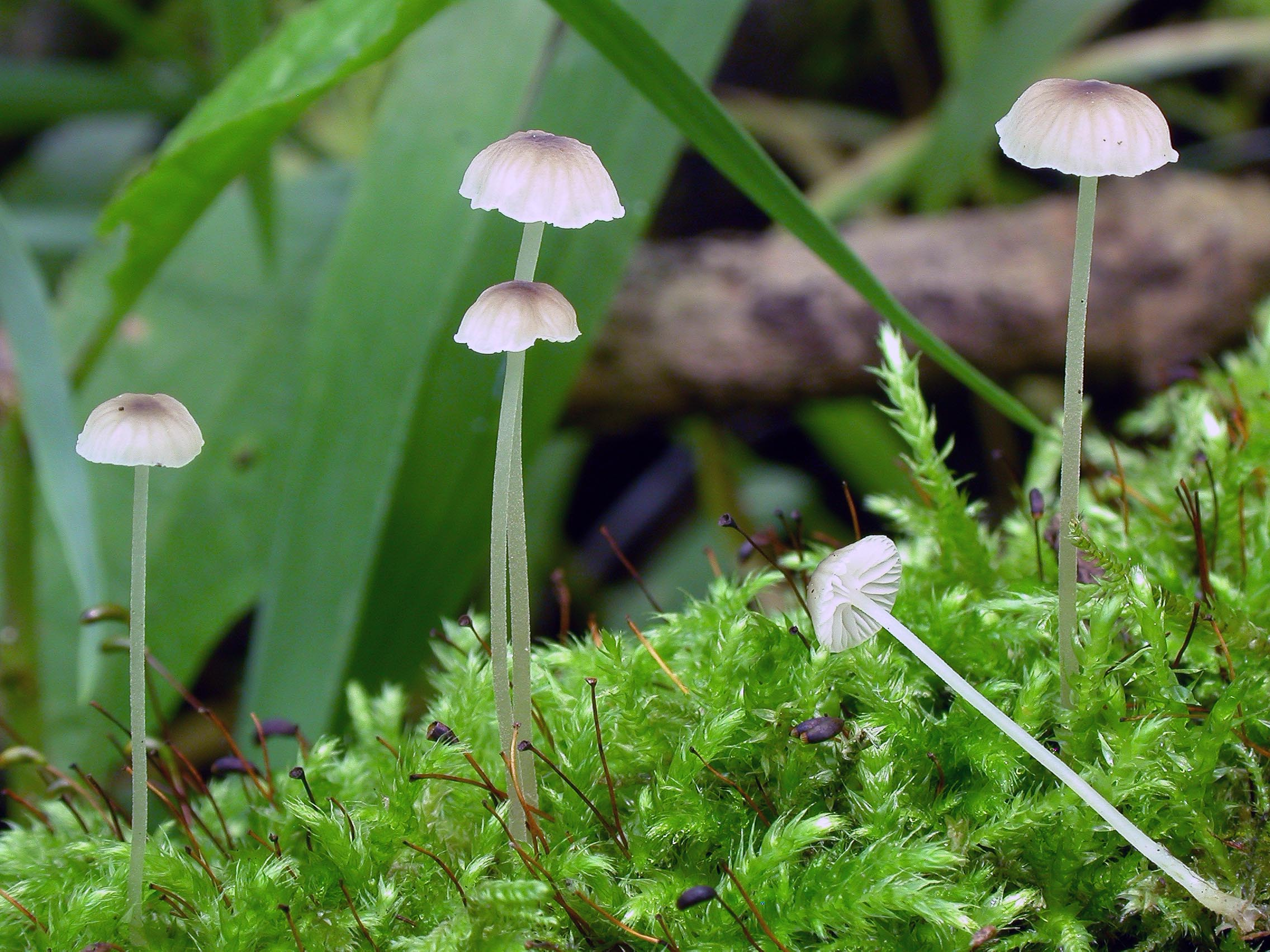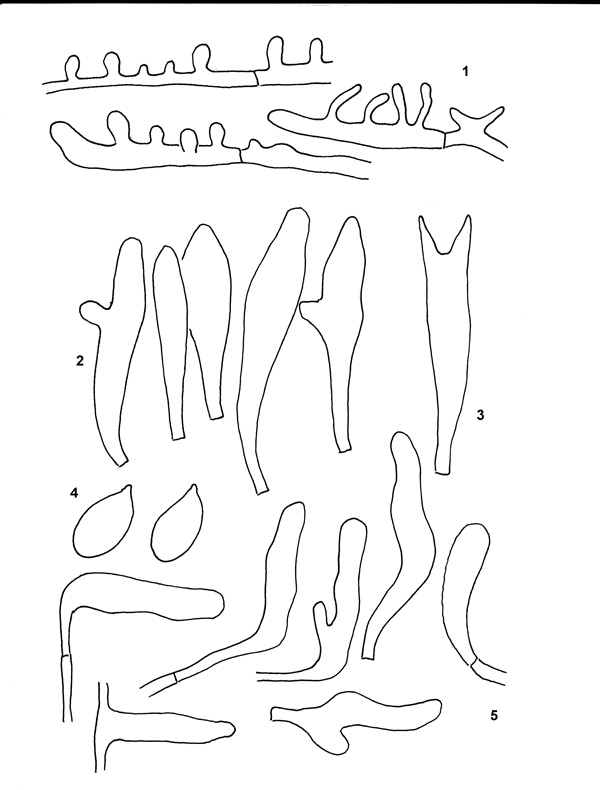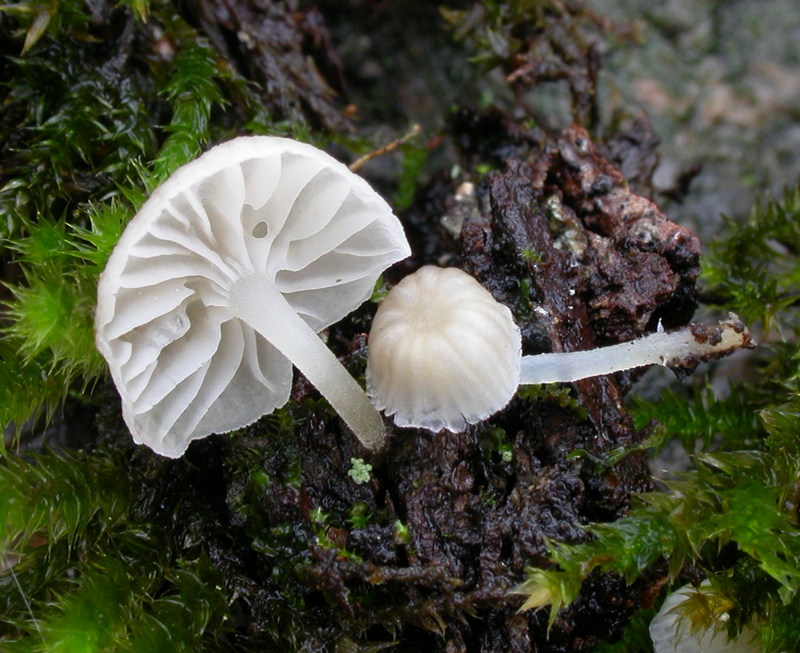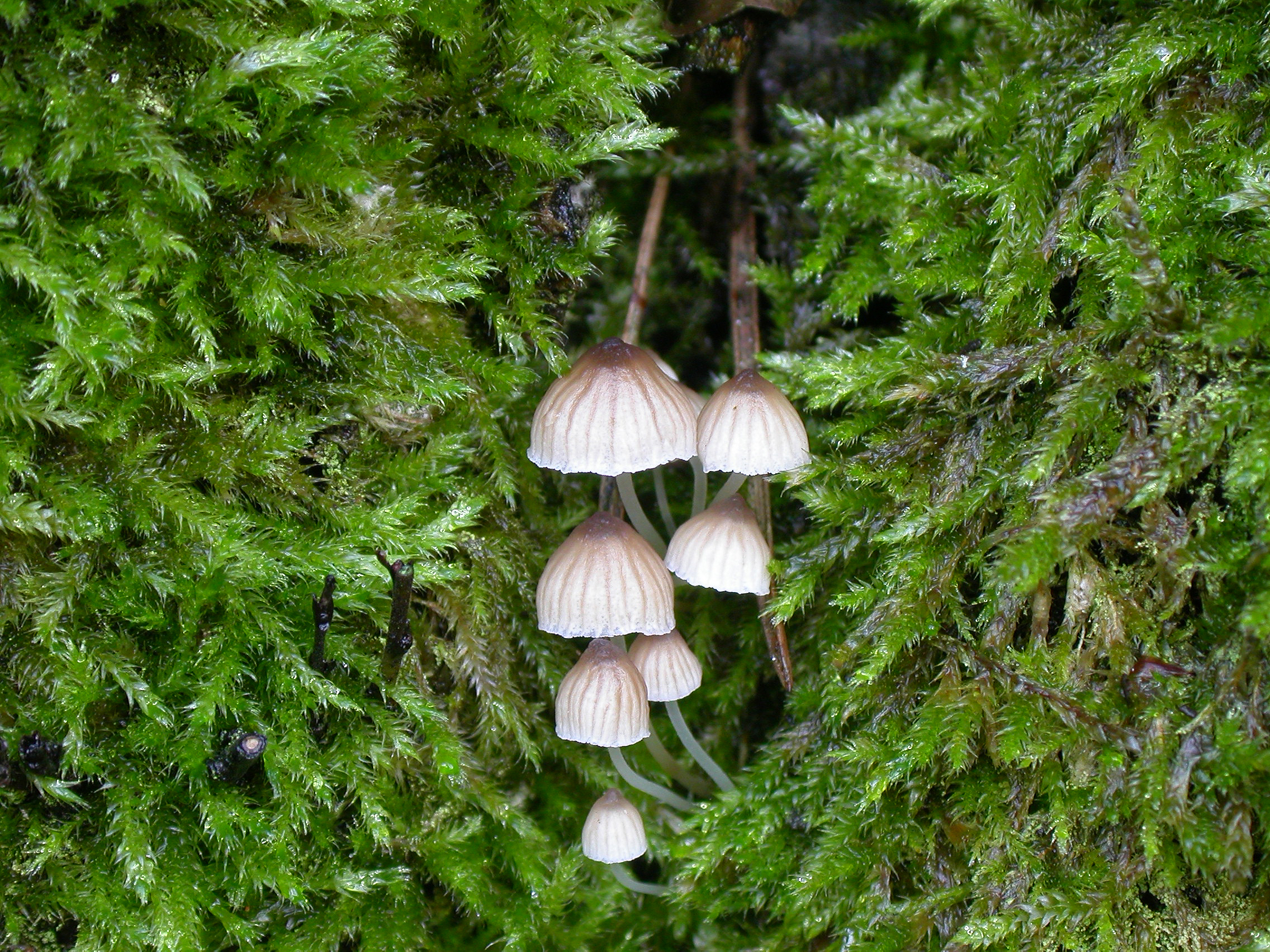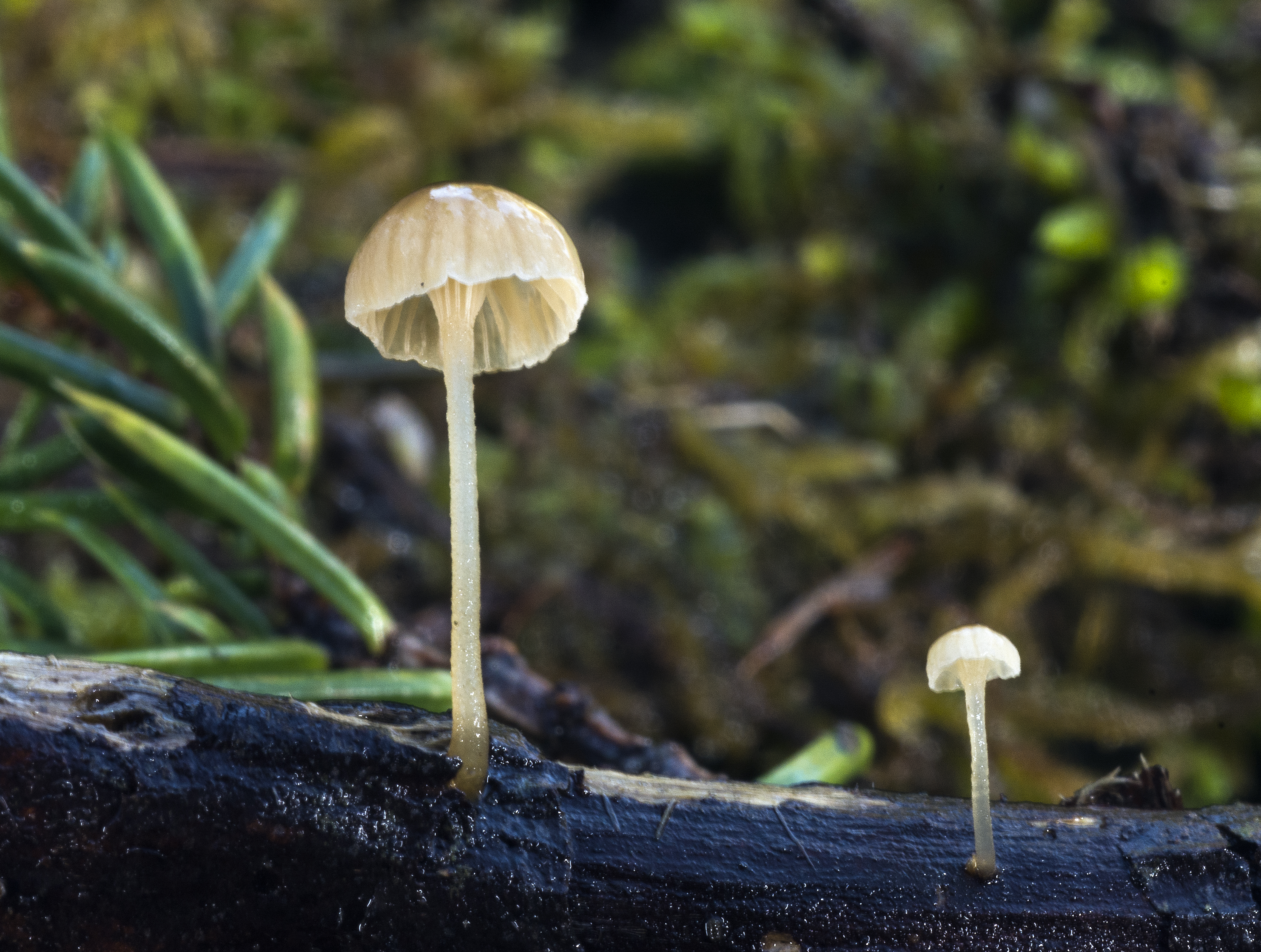Phloeomana speirea
Phloeomana speirea
Description
1. Hyphae of the pileipellis, 2. Cheilocystidia, 3. Basidium, 4. Spores, 5. Caulocystidia.
Cap 2-10 mm across, hemispherical, parabolical to plano-convex, depressed or papillate, shallowly sulcate, not infrequently somewhat rugulose-gibbous, translucent-striate, pruinose to minutely puberulous when young, glabrescent, pale grey-brown or pale yellowish brown, paler at the margin, drying whitish. Gills 10-17 reaching the stem, horizontal to arcuate, broadly adnate and decurrent, becoming ribbed and intervenose, whitish, or with some grey or yellowish shade, the edge concolorous. Stem 7-30 x 0.5-2 mm, fragile, cylindrical, equal or tapering downwards, minutely puberulous all over, watery whitish or yellowish or suffused with a brownish shade, often more pronouncedly sepia coloured below, the base more or less densely covered with coarse, whitish fibrils. In fresh condition the apical part of the stem turns wine red to brownish violet when touched with a small drop of Melzer's reagent. Odour and taste indistinctive. Basidia 22-28(-35) x 5.5-7 µm, clavate, 2-spored, with sterigmata 5.5-7 µm long. Spores 7.5-10(-11) x 4.5-5.8 µm, Qav ˜ 1.8-1.9, pip-shaped to amygdaliform, smooth, non-amyloid. Cheilocystidia 22-45 x 3.5-8 µm, forming a sterile band, subcylindrical, subfusiform, clavate, subutriform or somewhat irregularly shaped, usually simple but also fucate or lobed or covered with a few excrescences, curved to somewhat flexuous. Pleurocystidia absent. Lamellar trama weakly to not dextrinoid. Hyphae of the pileipellis 1.5-3.5 µm wide, covered with simple to branched, more or less cylindrical, curved to flexuous excrescences 1.5-14.5 x 1-3 µm which may form dense masses and tend to become somewhat gelatinized, with intracellular, brown pigmentation, seen in lower layers of pileipellis. Hyphae of the cortical layer of the stem 2.5-3.5 µm wide, smooth, caulocystidia either solitary or occuring in dense tufts, 15->100 x 2.5-8 µm. Clamps absent in 2-spored form.
Ecology and distribution
Solitary or in small groups on trunks of deciduous trees, on bark, woody debris and fallen twigs. Occuring from spring to late autumn. Widely distributed and common in Norway.
